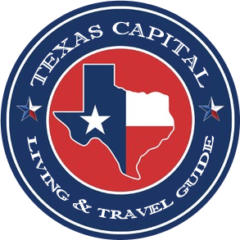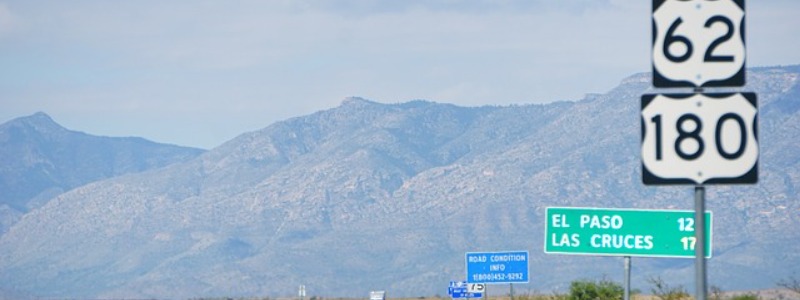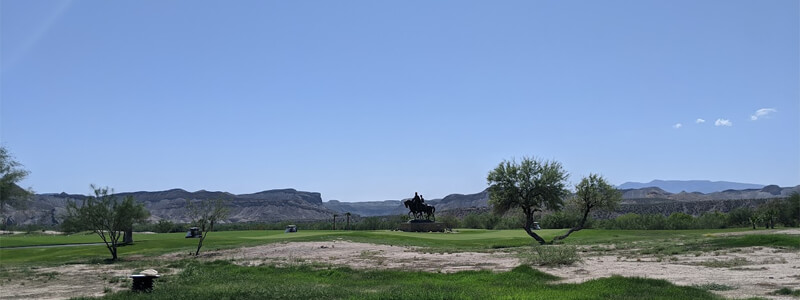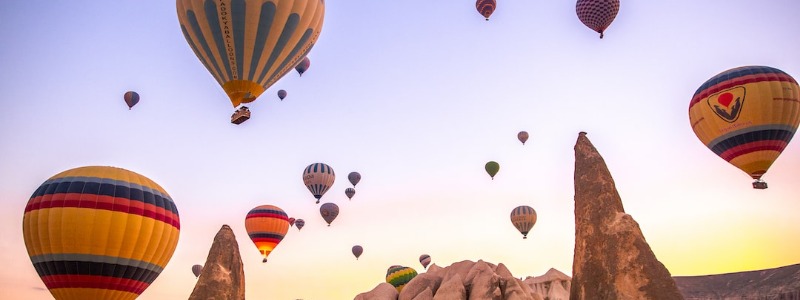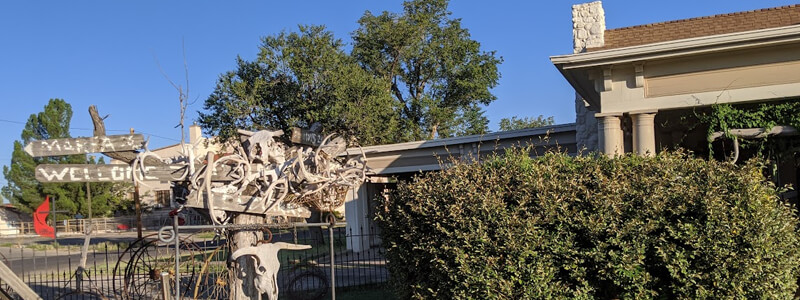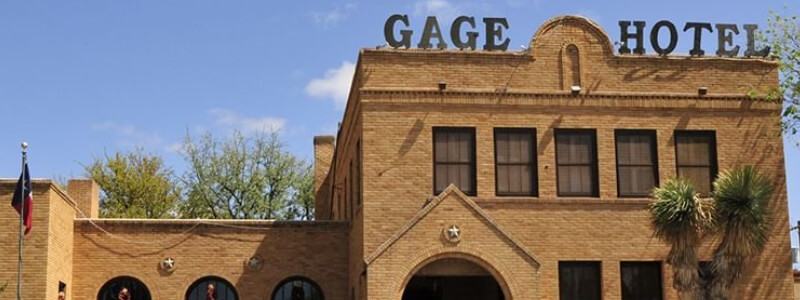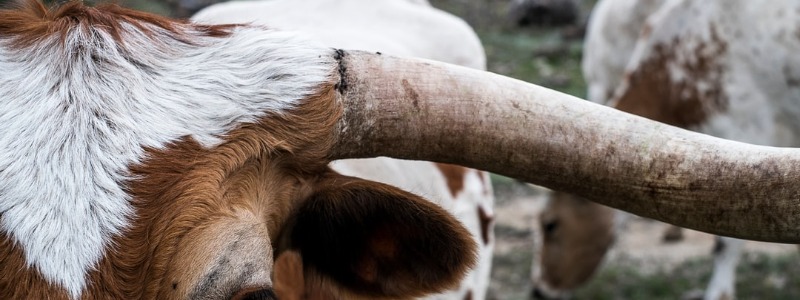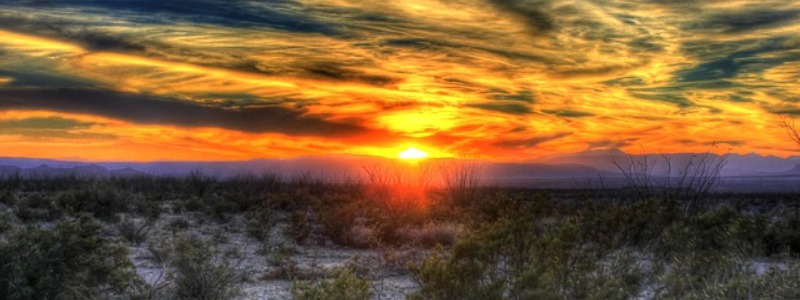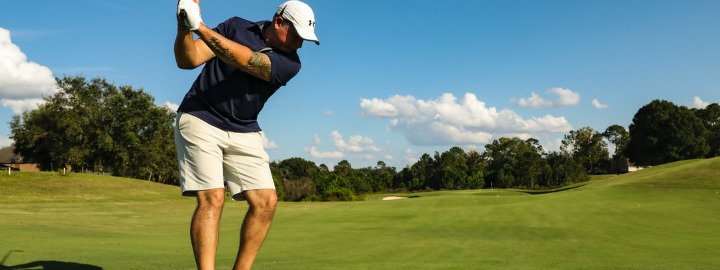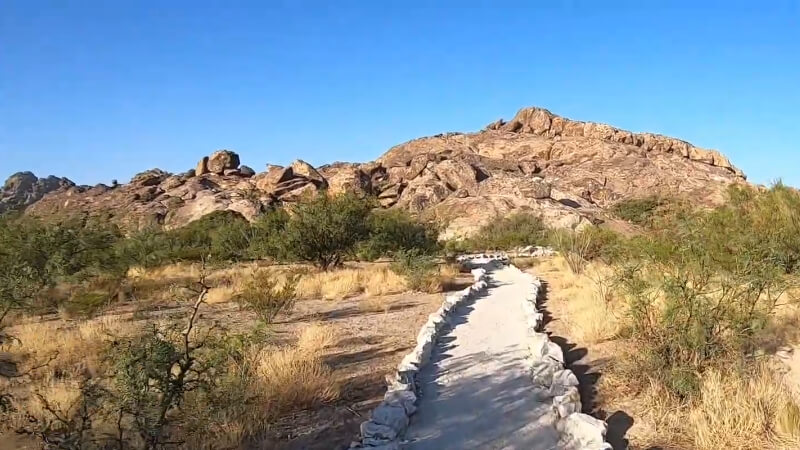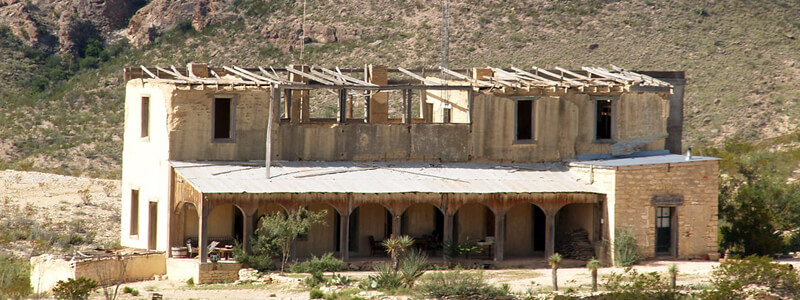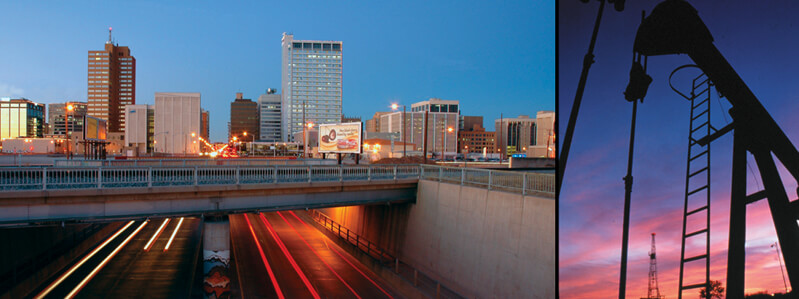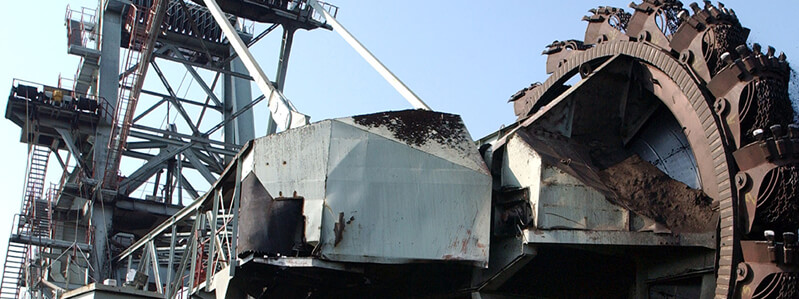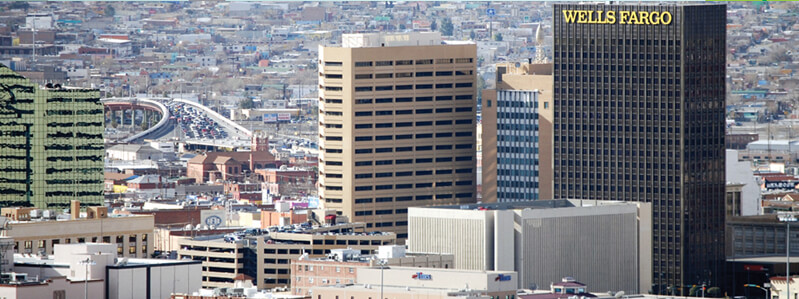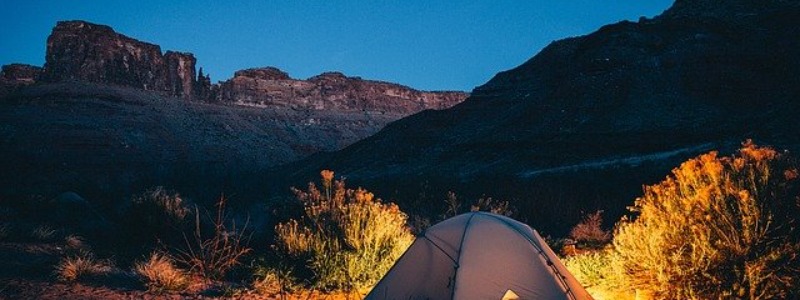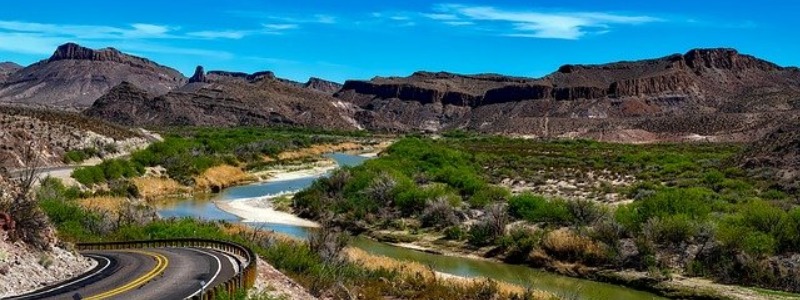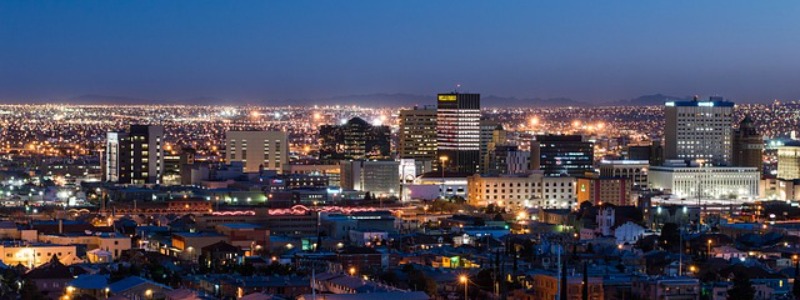West Texas is characterized by wide-open spaces, rugged plateaus (plat-toes), and desert mountains. The plateaus are covered in short grasses and brush. The desert is part of Mexico’s great Chihuahuan (chee-wow-when) Desert. This is the only place in Texas where you can find mountains.
Big Bend Country is a place of contrasts. The desert is hot and dry during the day, but cool at night. Plants and animals have adapted to life in the desert. In the winter, the mountains provide cold weather, with snow on occasion. On the slopes, forests grow. Because the high, cooler mountain tops cause precipitation to fall from clouds moving over the peaks, the slopes of these mountains can support tree growth.
Fun Things to do in El Paso
Best & Fun Things To Do In El Paso TX El Paso, located in the Chihuahuan Desert, is overflowing with things to do! From its stunning sunsets to its bustling…
Lajitas Resort – The Ultimate Hideout in West Texas
The days are long in West Texas, the sunsets are spectacular, and the stars shine brighter in the night sky than anywhere else on the planet. But there is a…
Big Bend Balloon Bash and the Marfa Lights Festival
This Labor Day Weekend, discover the mystery of West Texas! Explore the surreal landscape by air floating above the carpet at the whims of the wind, and spend your evening…
Things to do in Alpine TX
What to do in Alpine Texas? The unofficial capital of Far West Texas, Alpine offers an oasis of academia, arts, and cowboy culture splashed across a picturesque valley In the…
The Ghosts of the Gage Hotel
Haunted Gage Hotel – Marathon TX Home, Home on the range…that should be the slogan for the historic gage Hotel in Marathon, Texas. The hotel brochure says it all: “…Few…
Texas Cattle Drives
Reliving childhood dreams and fantasies have become big business in our pop culture-driven society and has tremendous impact on the travel industry as well. Just take a look at the…
Haunted Texas : Big Bend
Texas Haunted National Park? The Big Bend region has always been a spooky place, dating at least as far back as when the relatives of the pit-dwelling Anasazi roamed the…
Big Bend Country Golf Courses
Settle into the wide open spaces of Big Bend, where the blue skies are bigger and desert plains stretch as far as the eye can see. Just one round in…
Hueco Tanks Bouldering- Texas Rock Climbing
Rock Climbing – Hueco Tanks Texas The world-class bouldering at Hueco Tanks dominates rock climbing in Texas. Hueco Tanks is famous for its huecos (holes) and a plethora of overhanging…
Terlingua Texas Ghost Town
Terlingua, located in southwest Texas between Big Bend National Park and Big Bend Ranch State Park, is Texas’ most visited ghost town. Ghost Towns are unique echoes of history. As…
Industry in West Texas: Midland & Odessa
The Oil Industry in West Texas Midland and Odessa are cities located in West Texas right between Fort Worth and El Paso. It is a region that shares the largest…
Permian Basin Oil
Economic Opportunities in Oil and Gas Production in West Texas The Permian Basin, located in west Texas and southeastern New Mexico, is one of the largest oil and gas producing…
El Paso: Uniting Two Countries
Industry in El Paso El Paso is a dynamic place that merges one of the largest border communities in the North American country. And it is that the city has…
Big Bend Camping: A Complete Guide to the Best Camping Experience
Camping in Big Bend Texas West Texas has some of the state’s most pristine landscapes. Explore the Guadalupe and the Big Bend walking trails, raft through the narrow river canyons,…
Texas Big Bend Country Attractions
Things to Do in Texas Big Bend Country West Texas is another name for Big Bend Country. Visitors flock to Big Bend National Park, the Rio Grande River, Guadalupe National…
Best of El Paso, Texas Travel Guide
The Best of the Wild West in El Paso El Paso is not on everyone’s tourism radar. Situated along the borders of Mexico, Texas, and New Mexico – El Paso…
Chihuahuan Desert
The Chihuahuan Desert covers the majority of the landscape in this area. Despite its aridity, this remarkable area can burst with beauty after a brief rain. The mountains, valleys, and plains of the desert provide a diverse range of terrain and climates, and its rugged beauty must be seen to be appreciated.
The Big Bend Country stretches nearly 41,000 square miles from Midland-Odessa to the northeast and Del Rio to the southeast, bordered by Mexico to the south and New Mexico to the west. This is where you can get away from it all. Embrace the great outdoors and get lost in the mountains and wide-open spaces. There are nearly 1.17 million acres of wilderness terrain in the region. Hiking, biking, riding, birding, swimming, rafting, camping, photographing, painting, and simply relaxing are all options.
Big Bend Parks
Spend some time exploring Guadalupe Mountains National Park, which contains the state’s highest point as well as one of the most beautiful spots in the state—McKittrick Canyon. Expect to spend several days or more in Texas’ first national park, Big Bend National Park, which is roughly the size of Rhode Island. Monahans Sandhills State Park features rolling sand dunes and one of the country’s largest oak forests. Visit Balmorhea State Park to swim in one of the country’s largest man-made pools.
Big Bend Country is a great place to learn about life on the open frontier and in the Old West. The sometimes hostile conditions necessitated the establishment of forts such as Fort Bliss, Fort Davis, and Fort Stockton to protect pioneers and travelers. Visit the forts and other historical sites that helped shape the frontier. Throughout the region, numerous museums are dedicated to preserving the heritage and history of frontier life.
Gunfights, bank robberies, saloons, and boom towns abound in this region. The rustic saloon, courtroom, billiard hall, and opera house of Judge Roy Bean, the “Law West of the Pecos,” can be found in Langtry.
El Paso, the largest city in the United States on the Mexican border, combines the best of both sides of the border. Visit historic sites, the Tigua Indian Reservation at Ysleta, a performance at the Chamizal National Memorial, a ride on the Wyler Aerial Tramway, or any of the other activities available.
This region also offers unique experiences such as seeing the Marfa lights, participating in the Terlingua chili cook-offs, attending a production at the Globe Theatre of the Great Southwest in Odessa, eating a Pecos cantaloupe, hunting precious minerals at Woodward Agate Ranch in Alpine, and celebrating Roy Orbison’s music in his hometown of Wink.
Before visiting this area, keep in mind that people can drive for miles with only the desert landscape for company. Use the information on the following pages about the cities/towns and their respective attractions to help you plan your adventure. The overwhelming allure of Big Bend Country is sure to awe and inspire you!
Alpine
Established in 1882, Alpine is the seat of Brewster County. Centrally located between the Davis and Glass mountains and near Big Bend National Park, Alpine is a Texas Main Street City. It is a retail center and shipping point for a huge ranching area, headquarters for mining companies, and home of Sul Ross State University. There’s also a historic downtown shopping district with several antique stores and art galleries.
Several theater groups put on seasonal productions. The Theatre of the Big Bend offers musicals and dramas under the stars during the summer. 432/837-8220. Big Bend Players present four to six shows each year. 432/837-2921. The theater department at Sul Ross State University highlights student talent from September through May. www.sulross.edu.
The climate and location make the town a popular vacation area. Visitors enjoy golfing, mountain climbing, rock and mineral collecting, swimming, and camping amid spectacular vistas. During seasons, hunters take mule deer, white-tailed deer, pronghorn antelope, javelina, and upland game birds. Special events include the Texas Cowboy Poetry Gathering in February, Big Bend Balloon Bash during Labor Day weekend, and local and collegiate rodeo events. Bed-and-breakfast accommodations are offered in historic buildings.
Balmorhea
The original inhabitants of the area were the Mescalero Apaches. The town was established in 1906 by a firm of land promoters. The town site was in the center of a 10,000-acre tract watered by the San Solomon Springs.
Nearby Balmorhea Lake offers opportunities for birding and fishing, plus primitive and full-service camping sites. The lake is stocked with channel catfish, largemouth bass, sunfish and crappie. A fishing license can be obtained at Balmorhea State Park. The lake is along the North American Central Flyway and is a great area to view a variety of birds during the fall and spring migrations. Permit fees are required.
Other area sights include Calera Church. Originally named Mission Mary, the church first recorded baptisms and marriages in 1902. The mission was renovated in 2003 and now serves as an all-denominational chapel. It is two miles west of Balmorhea State Park on F.M. 3018.
Events include the First Friday Monthly Flea Market, Memorial Day Festival Softball Tournament, and Labor Day Festival Softball Tournament.
Fort Davis
Fort Davis was established and grew under the protection of the U.S. Army post of the same name that was founded in 1854 at the crossroads of the famous Chihuahua Trail and Butterfield Overland Mail Route. The community has served as a county seat of Presidio County and later Jeff Davis County—created largely from Presidio. Fort Davis was among the 2008 Dozen Distinctive Destinations named by the National Trust for Historic Preservation. Altitude and climate make it a popular tourist and camping area. Visitors will find specialty shops, restaurants, and accommodations, including the oldest inn in the state.
The Prude Guest Ranch is popular for meetings and vacations. Horseback riding, hayrides, chuck-wagon cookouts, and more. 800/458-6232. www.prude-ranch.com.
Fort Stockton
The town developed with the establishment of a military post in 1859. It was an outpost on the Butterfield Overland Mail Route at the crossing of the Old San Antonio Road and an ancient Comanche War Trail. Popular with Native Americans because of the large springs nearby. The area was one of the earliest irrigated farming efforts in Texas; about 8,000 acres were irrigated as early as 1877. Today, this is the seat of Pecos County; a retail and shipping headquarters for vast ranching, natural gas, and oil activities; and a major West Texas crossroads. Hunting is excellent for mule deer and pronghorn antelope.
Kermit
Winkler County seat was a mere village in 1926 when the county population was 81. When oil was discovered nearby in the Permian Basin, the boom was on. Today, it is a center for the oil and petroleum-based industries. The county-owned golf course is open Tue.–Sun., seven miles west on Texas 302.
Marathon
Marathon’s name was suggested by a sea captain who said the area reminded him of Marathon, Greece. A cattle and mining shipment center in its heyday, today, the town on U.S. 90 at the junction with U.S. 385 is a tourist crossroads, a major gateway to Big Bend National Park, and a headquarters for vast ranching activities. Visitors can catch glimpses of the town’s colorful past at the Marathon Museum, at North Third Street and Avenue E, and the old Marathon Jail at South Second Street and Avenue C. The town hosts West Fest, complete with a cabrito cook-off, in September, and the Fiesta de la Noche Buena takes place in early December.
Marfa
Marfa was established in 1881 as a water stop for the Texas and New Orleans Railroad. Today, it is a trading point for many large ranches in the surrounding mountains. The superb climate makes it a popular tourist center. In season, hunters are attracted by plentiful mule deer and pronghorn antelope.
In 1955, the El Paisano Hotel served as the base of operations for filmmaker George Stevens while filming the movie “Giant.”
Check out the highest golf course in Texas—the Marfa Municipal Golf Course—situated at 4,882 feet above sea level. The nine-hole course boasts a 360-degree view of mountains and open ranchland. Open Tue.–Sun. At the end of Golf Course Road. 432/729-4043.
Strong thermal updrafts and legendary soaring conditions make this an outstanding location for glider rides. Marfa Gliders: 800/667-9464. www.flygliders.com.
Monahans
Spanish explorers crossed the area of present Ward County more than 400 years ago, but it remained an undisturbed habitat for Native Americans until the mid-1800s. The city was established in about 1881 as a stop on the Texas and Pacific Railroad, which was building west of Fort Worth. It became the county seat and, today is a financial and marketing center for more than 800 square miles of cattle and oil country.
Oil wells, drilled at a distance from the downtown area, are slanted to draw oil from beneath city hall, courthouses, banks, and business houses.
Pecos
Established in 1881 as a stop on the Texas and Pacific Railroad, Pecos gained early fame as a hangout for rowdy cowboys and fast-draw lawmen. Touted as the “Home of World’s First Rodeo,” Pecos was the scene of a cowboy contest in 1883 that was the forerunner of today’s popular sport. (West of the Pecos Rodeo, Fourth of July, re-enacts 1883 events.) Today, it is a hub of travel and a commercial center for ranching, irrigated farming, produce processing, and oil production. Area hunting includes mule deer, javelina, and upland game birds.
Pecos is also known for cantaloupes. Grown in irrigated fields, this luscious melon is the delight of gourmets throughout the United States. Quality derives from a natural combination of alkaline soil, western sunlight, and altitude. Pecos cantaloupes enjoy comparable status with Maine lobsters, French wines and Swiss cheeses. Harvested late July through September with a festival held in late summer. For the festival schedule, call 432/445-2406.
Salt Flat
Salt Flat, a small community in Hudspeth County that was the focus of a bloody dispute known as the Salt War in the 1860s and ’70s, was also located in the region. Some of the gray-white salt deposits can still be seen today from US Highway 62/180.
The small community grew near extensive surface salt deposits left by intermittent lakes in Hudspeth County just west of the Guadalupe Mountains. The area was the focus of a bloody dispute known as the Salt War in the 1860s and ’70s. Before the dispute reached a confused, tragic end, it had involved both Mexican and U.S. citizens, political parties, judges, legislators, mob action, army troops, and Texas Rangers. Murder, assassination, and revenge killings took place on both sides. Some of the gray-white salt deposits may be seen today from U.S. 62/180.
Sierra Blanca
Now on I-10 in far West Texas, the town grew at the juncture of the nation’s second transcontinental rail route in 1881 (Southern Pacific and Texas & Pacific). The historical marker—at the corner of Sierra Blanca Avenue and U.S. 80—commemorates the event downtown. Town named for Sierra Blanca Mountain (6,950 feet) to the northwest.
Van Horn
The town grew from a wayfaring stop on the historic Bankhead Highway and Old Spanish Trail from San Antonio to California in the mid-1800s. It is still a primary road junction of I-10 (U.S. 80), U.S. 90, and Texas 54, and it is a hub to several state and national parks. In a broad basin devoted to irrigated farming, it is surrounded by Van Horn, Sierra Diablo, and Apache mountains. Mining includes talc, sulfur, and marble, plus undeveloped indications of copper, uranium, and feldspar. A popular stop for travelers, it also caters to longer-staying vacationers with its sunny climate, interesting rock, and mineral deposits, hunting for mule deer, pronghorn antelope and upland game birds.
John Madden, a former colorful television football broadcaster, designated the Chuy’s Restaurant in Van Horn as his “Haul of Fame.” Just before Super Bowl weekend, he would name his “All-Madden Team.” Plaques and photos of “All-Madden Team” inductees hung in the restaurant. 1200 W.
Culberson County Historical Museum
Features displays of Native American artifacts, plus antique ranch, farm, and home implements. A resplendent antique bar, complete with ornate hardwood, mirrors, and brass rail, recalls lusty frontier times. In historic Clark Hotel, 110 W. Business Loop 10 downtown. Van Horn Convention and Visitors Bureau: 432/283-2682.
Big Bend Country
Big Bend Country is a wild and beautiful place with many opportunities to explore the natural beauty of Texas. From hot springs to mountain hikes, and from scenic vistas to unique geological formations, this region has something for everyone. Visitors can discover a variety of wildlife, including some species found nowhere else in the world. The amazing array of activities offered by Big Bend National Park, along with the surrounding state parks and recreation areas, make this a destination worth visiting again and again.
